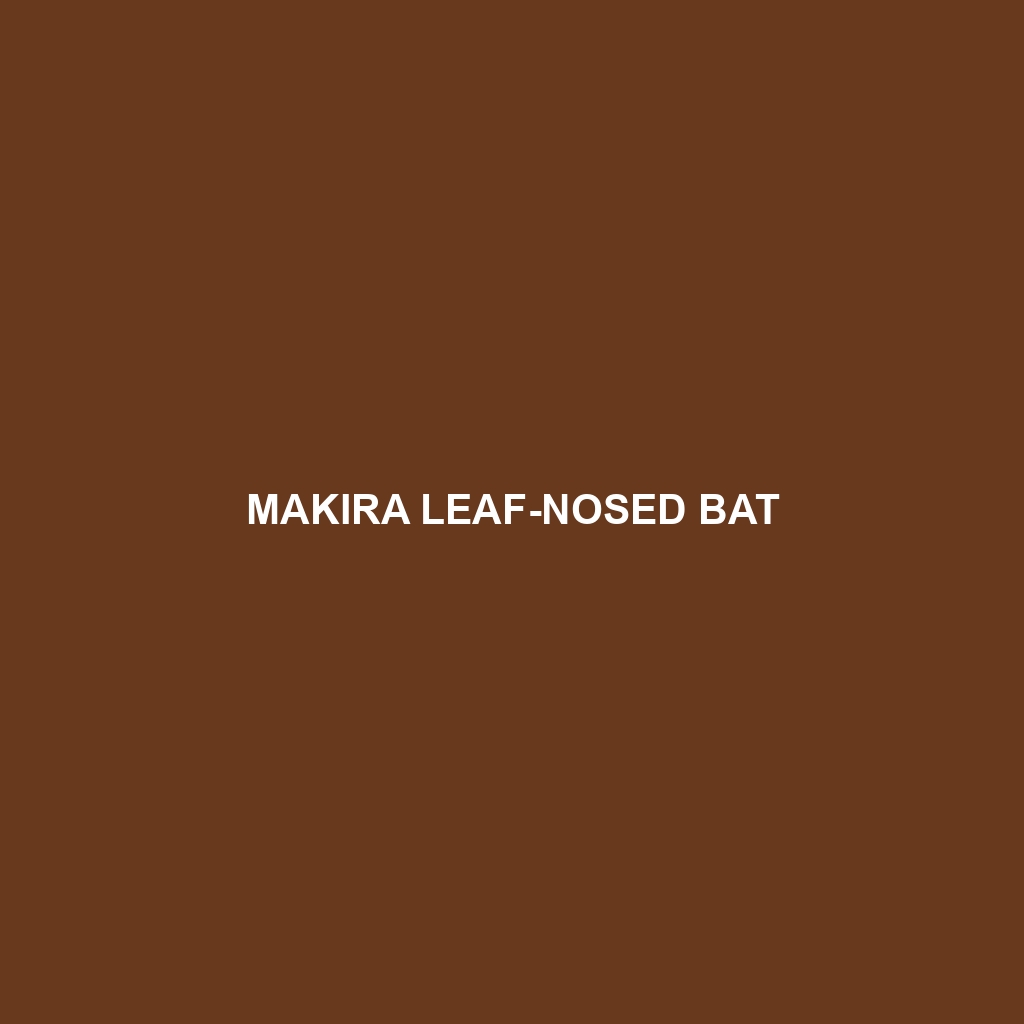Common Name: Makira Leaf-nosed Bat
Scientific Name: Hipposideros hilli
Habitat:
The Makira Leaf-nosed Bat primarily inhabits the lush rainforests of Makira Island in the Solomon Islands. This species thrives in tropical and subtropical moist lowland forests, where it roosts in caves and dense vegetation. The unique geography of its habitat includes steep hills and forested valleys, providing ideal conditions for this bat species.
Physical Characteristics:
The Makira Leaf-nosed Bat is medium-sized, measuring approximately 8.5 to 10 cm in body length. It showcases a distinctive leaf-shaped nose structure that aids in echolocation, providing it with a unique appearance. Its fur is generally a rich dark brown, often with lighter underparts, and features large, rounded ears that enhance its auditory capabilities.
Behavior:
This bat is primarily nocturnal, engaging in active foraging at night. It exhibits a variety of behaviors, including social roosting in groups, which helps with thermoregulation and protection against predators. The Makira Leaf-nosed Bat is known for its agile flying abilities, allowing it to navigate through dense forest canopies efficiently.
Diet:
The Makira Leaf-nosed Bat feeds predominantly on insects, particularly moths, beetles, and other flying arthropods. Utilizing its echolocation skills, it locates its prey in flight, showcasing remarkable hunting techniques. Its diet plays a crucial role in controlling insect populations within its habitat, making it an important species for ecological balance.
Reproduction:
Breeding typically occurs during the wet season, with females giving birth to a single pup after a gestation period of approximately 90 days. Maternal care is significant, with mothers nursing their young for several weeks post-birth. This reproductive strategy ensures that the pups are well-developed and capable of surviving in their forest environment.
Conservation Status:
The Makira Leaf-nosed Bat is currently classified as endangered by the International Union for Conservation of Nature (IUCN). Threats to its survival include habitat destruction due to logging, agricultural expansion, and climate change. Conservation efforts are critical to protect this unique species and its rainforest habitat.
Interesting Facts:
One fascinating aspect of the Makira Leaf-nosed Bat is its ability to detect and avoid obstacles at high speeds in dense forests, thanks to its sophisticated echolocation. Additionally, this species contributes to pollination and seed dispersal in the ecosystems it inhabits, showcasing its broader ecological significance.
Role in Ecosystem:
The Makira Leaf-nosed Bat plays a vital role in its ecosystem as both a predator of insects and a pollinator of various plants. By feeding on insects, it helps maintain population control, while its foraging also supports plant reproduction through pollination and seed dispersal, thus fostering biodiversity within its rainforest habitat.
